New study: Mitigating hurricane damage in pecan
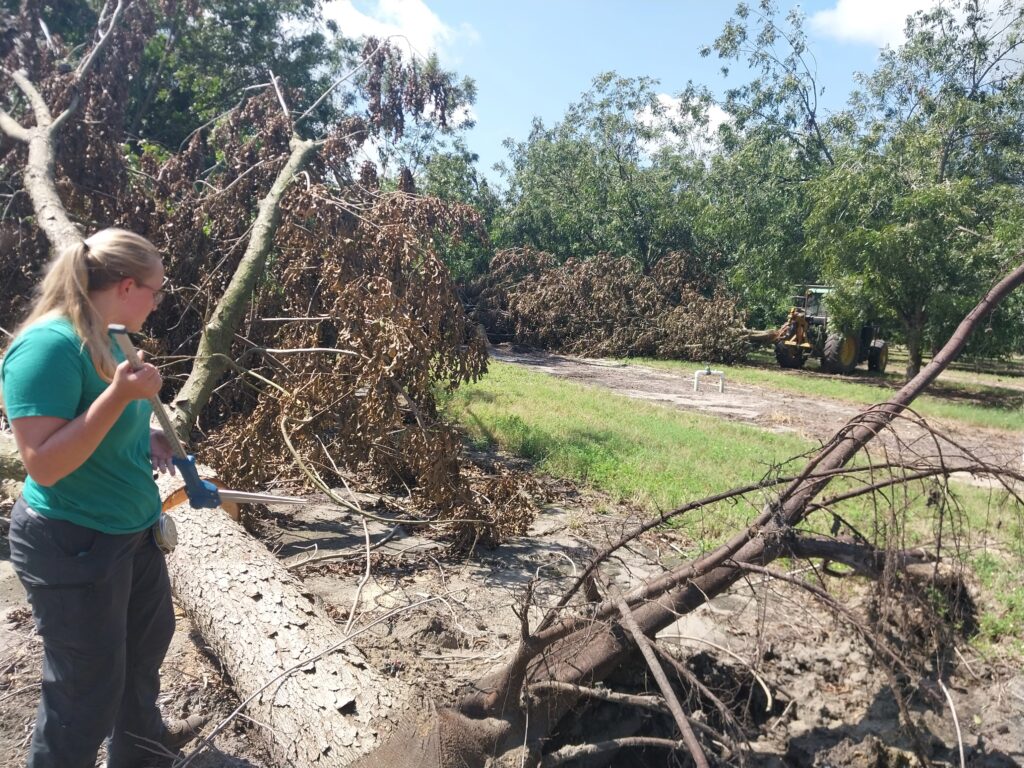
Pecan orchards are a vital part of southern Georgia’s working landscapes, but recent hurricanes have caused severe losses to growers. In a post-storm field study, our lab surveyed over 1,100 trees across 11 orchards following Hurricane Idalia to understand patterns of wind damage. We found that intermediate-sized trees were most vulnerable and that orchard age structure plays a key role in storm resilience. These findings provide a foundation for climate-smart practices that can reduce risk and improve long-term sustainability.
New study: Patchy longleaf pine regeneration changes fuels and fire behavior
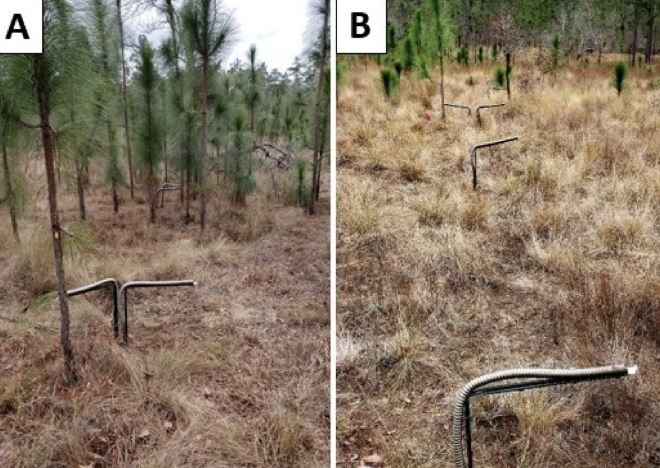
Longleaf pine ecosystems depend on frequent fire which changes competitive and growth dynamics of the ecosystem. However, fire behavior is complex and driven by complex feedbacks between fire effects, fuels, and vegetation. In an intensive field study, we investigated how dense patches of longleaf pine regeneration can change fuels and fire behavior compared to regenerating saplings occuring singly. We found that regeneration have altered fuels, and often reduced fire behavior in a manner that likely shapes spatial dynamics in the ecosystem
New study: Identifying defects in damaged trees to improve guidance for timber salvage
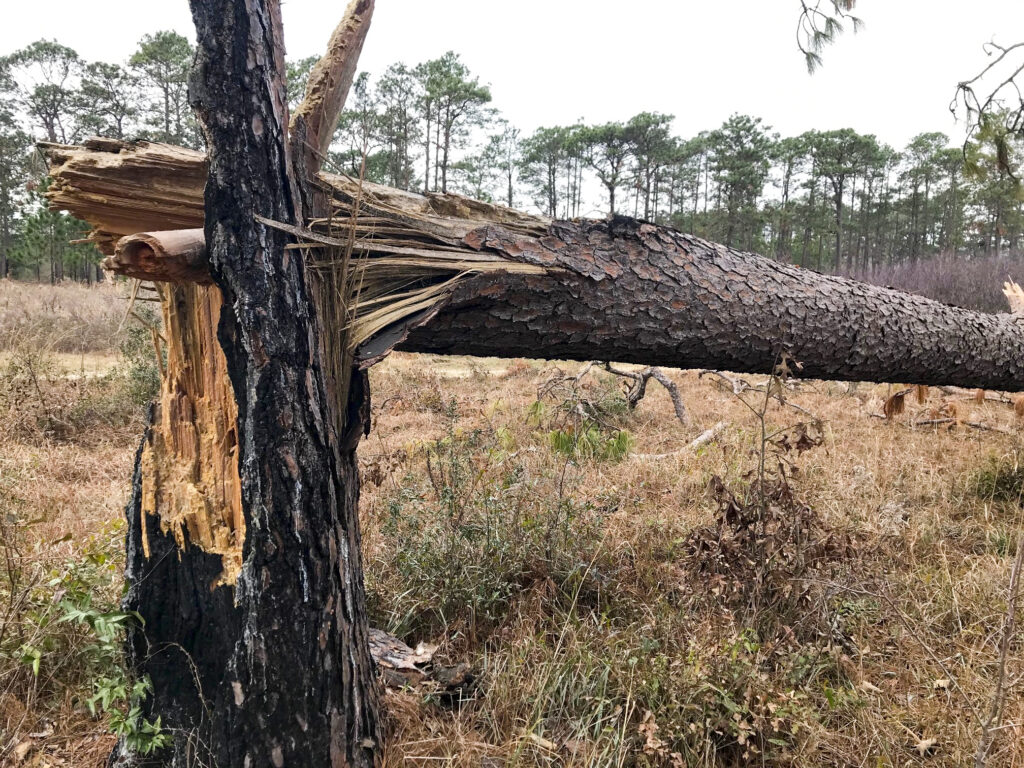
Trees damaged by severe winds experience twisting and snapping that damages useful parts of the tree bole. Visible damage is readily visible on lower portions of damaged trees, but unseen defects can extend further up the bole. Thus it can be difficult for loggers to determine wood quality and merchantability during post-storm timber salvage. We used acoustic measurements to find wood defects and found that traditional guidelines are too conservative. We provide guidance for loggers to help safely harvest substantially more of the bole after severe winds.
New study: Overstory and litter properties drive fuel dynamics
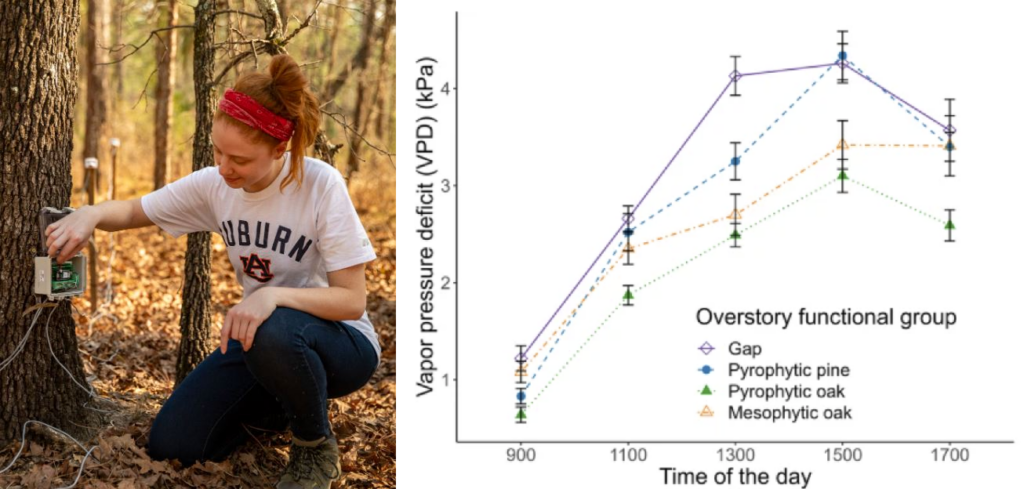
The composition of fire-dependent forests can shift after decades of fire exclusion. Forests can shift to trees with distinct overstory and leaf litter traits that can further suppress fire and make restoration difficult. We compared how leaf litter and overstory properties differed between fire-adapted pines and oaks, and the non-fire adapted species that often encroach after fire suppression. We found that trees produced distinct microclimates and that drying properties of leaf litter varied among species. This information is useful for understanding mesophytic encroachment and for accelerating successful restoration efforts
New study: Precipitation can increase stability of some trees in wind storms
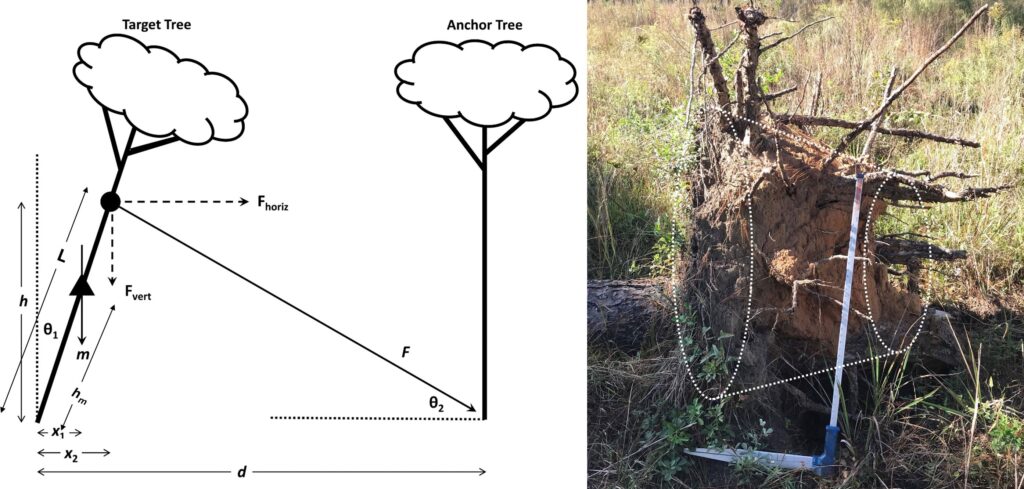
Root anchorage is one of the main drivers of tree stability in wind storms. Tree winching help to understand forces that tree can withstand. We compared stability of two pine species after wetting the soil and uncovered that wet soil can actually *increase* tree strength by add weight to the root mass. This experiment helped resolve a paradox of soil moisture by distinguish the opposite effects of long-term and short-term soil moisture.
New study: Regeneration and microclimate patterns in a structurally diverse ponderosa pine forest
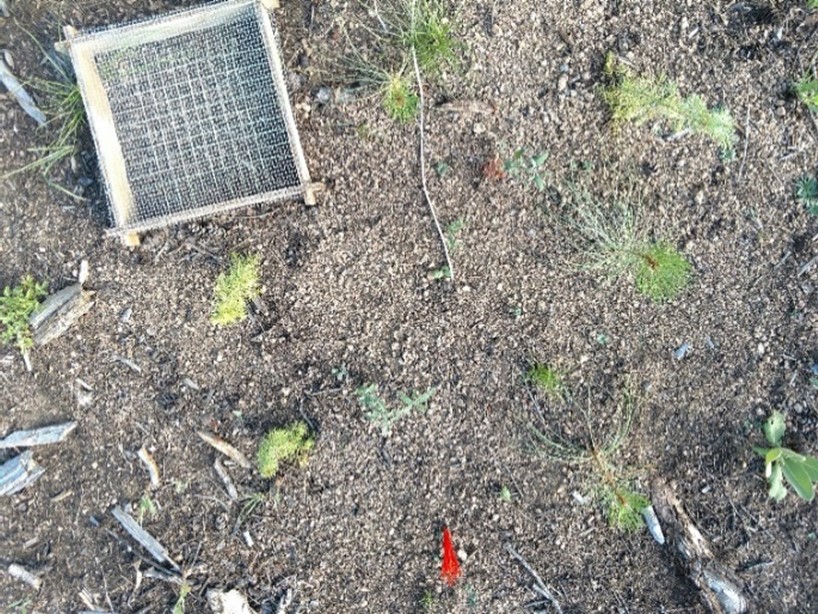
Forest restoration treatments in ponderosa pine forests of the western US emphasize creation and maintenance of complex forest spatial pattern. Patterns of canopy cover and light can alter microclimate and impact seedling germination and growth. We studied fine-scale abiotic conditions and seedling dynamics for 3 years in a dry conifer forests near Denver, Colorodo. We found that canopy cover was important for mitigating extreme conditions, but that survival of all species was greatest in warm dry microclimates.
New study: Protecting planted longleaf pine from severe winds
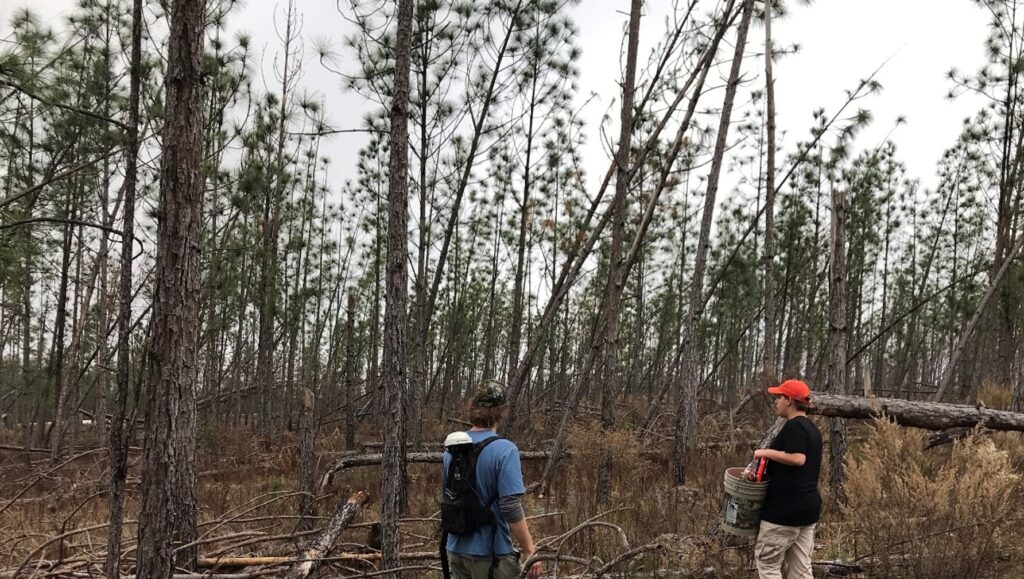
Planted stands of longleaf pine contribute to landscape-scale restoration of the ecosystem and the imperiled species it harbors. Yet frequent severe winds from hurricanes occur throughout its range. We surveyed planted stands of longleaf pine in the aftermath of Hurricane Michael. We found that damage increased with forest fragmentation and stands with increased taper were most resistant
Can off-site native pines accelerate longleaf pine restoration?

Meeting the pace and scale of longleaf pine restoration may require innovative solutions. Restoration of longleaf pine woodlands often starts with removal of native pines, prior to re-establishing longleaf pine. Here, we review functional similarities among native, off-site pines such as loblolly, slash, and shortleaf have enough functional similarity. We found that native-off site species may be a useful tool for providing many of the ecological benefits especially if their retention permits unterrupted management with fire and open structure.
New study: Hurricanes boost reproduction in longleaf pine
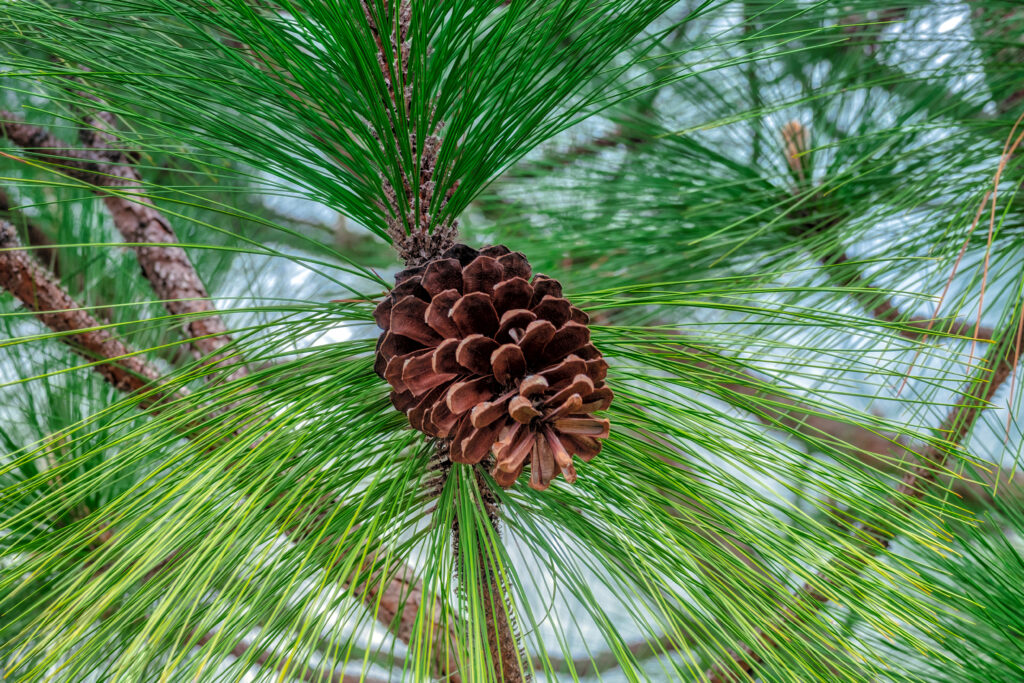
Using long-term records of longleaf pine cone production, hurricane tracks, and weather data, a new study has uncovered that hurricanes can boost cone production for two years in the masting species, longleaf pine. The study was led by the Jones Center and the USDA Forest Service Southern Research Station and published in the journal New Phytologist.
New study: Patterns of hurricane gaps in a longleaf pine landscape
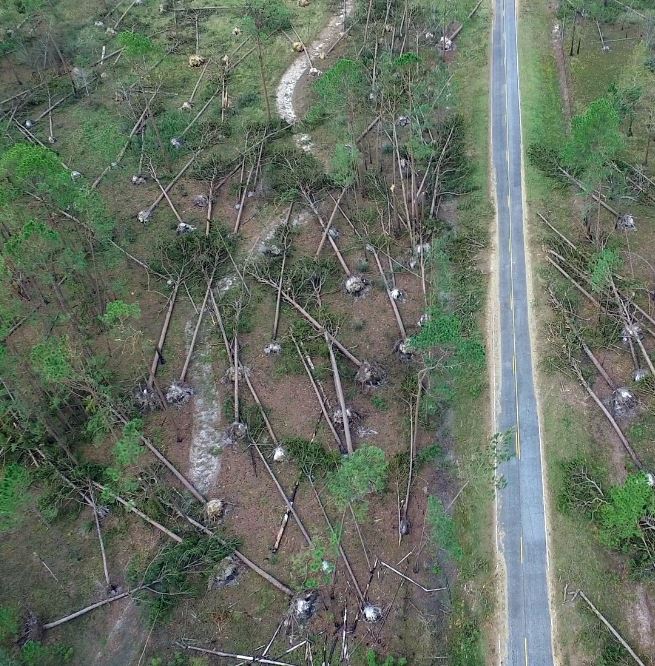
Ecological approaches to forestry seek to emulate aspects of natural disturbances like hurricanes which are a common disturbance in longleaf pine forets. This study used airborne lidar to measure patterns of hurricane-created gaps to offer guidance for application of natural disturbance-based management in landscapes dominated by longleaf pine.